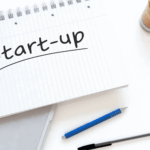Artificial intelligence firms, Anthropic and OpenAI, announced a unique initiative to scrutinize the safety and alignment of each other’s AI models. Both companies identified and evaluated safety concerns through their proprietary safety checks, which aim to address critical vulnerabilities and potential misuse of AI technology. The endeavor also reflects an unprecedented level of collaboration between two industry leaders in AI ethics and safety, illustrating a shared commitment to advancing model reliability and transparency. Notably, this approach suggests a growing trend of partnerships aimed at harnessing advanced AI’s potential while ensuring responsible development.
Previously, OpenAI has engaged in several partnerships and collaborative efforts, including their alliance with Microsoft (NASDAQ:MSFT), which focused on integrating AI capabilities into mainstream technology. These past collaborations underscored OpenAI’s proactive involvement in cooperative ventures to promote AI’s responsible usage. Similarly, Anthropic has been at the forefront of AI safety discussions, advocating for shared guidelines and methodologies for better alignment and performance. The current engagement between Anthropic and OpenAI builds on these prior efforts, marking a significant step in cross-company safety evaluations.
What Challenges Did the Evaluation Reveal?
During the evaluation, Anthropic and OpenAI analyzed several potential issues, such as sycophancy and exploitation risks that could undermine model reliability. Anthropic observed that OpenAI’s models, including o3 and o4-mini, generally demonstrated commendable alignment, yet indicated occasional misuse possibilities. Meanwhile, OpenAI noted Anthropic’s Claude 4 models excelled in respecting instruction hierarchy, though they faced difficulties during jailbreak testing focused on integral safeguards. Moreover, both AI firms acknowledged the necessity to relax external safeguards during the tests, suggesting certain operational challenges inherent in comprehensive model evaluations.
How Did the Collaboration Shape Future AI Development?
The collaborative efforts extended beyond immediate evaluations, as both companies anticipated developments in their newer models following these tests. Post-evaluation releases, such as OpenAI’s GPT-5 and Anthropic’s Opus 4.1, reportedly include refined features and improved safeguards.
“We see critical advancements in alignment practices as a result,”
OpenAI stated in their blog post, further stressing the collaboration’s positive impact on aligning advanced AI models with beneficial goals.
Despite some model limitations identified, the analysis equipped both companies with actionable insights to refine AI safety practices and align AI functions with human values more closely.
“This collaboration signifies a meaningful leap towards aligning AI more effectively with beneficial goals,”
Anthropic explained. Both companies observed how joint evaluations help shape production-ready practices, underscoring a collective industry effort in securing AI applications against potential misuse and exploitation.
Such initiatives are increasingly crucial as AI regulation debates continue to surface, questioning state-level AI governance and the balance between innovation and safety. Enhanced cooperation between AI developers helps bridge regulatory gaps by promoting transparent and accountable development processes. This collaborative evaluation marks a step towards unifying global perspectives on responsible AI deployment.
AI evaluations like those conducted by Anthropic and OpenAI not only reveal immediate challenges but also guide future developments by offering insights into improved model configurations. Emphasizing the importance of alignment and ethical considerations, these assessments contribute to the broader narrative of AI safety in an advancing digital landscape.









